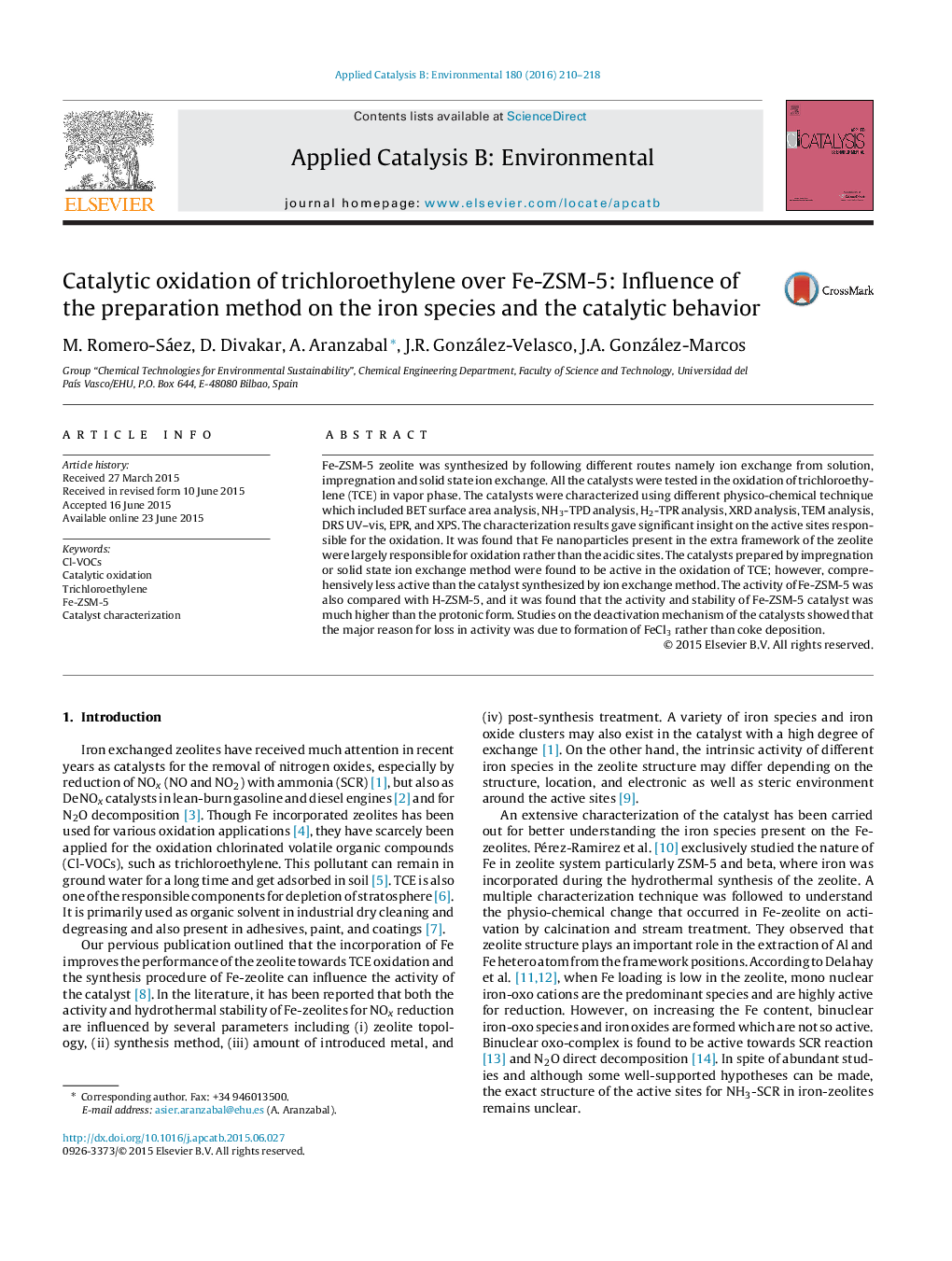| کد مقاله | کد نشریه | سال انتشار | مقاله انگلیسی | نسخه تمام متن |
|---|---|---|---|---|
| 45236 | 46407 | 2016 | 9 صفحه PDF | دانلود رایگان |

• Fe-ZSM-5 zeolites were more active and stable than the H-zeolite in TCE oxidation.
• Fe-ZSM-5 produced by wet ion exchange was the most active zeolite.
• The acidity of these Fe-zeolites was not a key factor in their activity.
• Fe2O3 nanoparticles found to be active iron specie in the oxidation of TCE.
• FeCl3 produced by chlorination of Fe2O3 contributed to catalysts deactivation.
Fe-ZSM-5 zeolite was synthesized by following different routes namely ion exchange from solution, impregnation and solid state ion exchange. All the catalysts were tested in the oxidation of trichloroethylene (TCE) in vapor phase. The catalysts were characterized using different physico-chemical technique which included BET surface area analysis, NH3-TPD analysis, H2-TPR analysis, XRD analysis, TEM analysis, DRS UV–vis, EPR, and XPS. The characterization results gave significant insight on the active sites responsible for the oxidation. It was found that Fe nanoparticles present in the extra framework of the zeolite were largely responsible for oxidation rather than the acidic sites. The catalysts prepared by impregnation or solid state ion exchange method were found to be active in the oxidation of TCE; however, comprehensively less active than the catalyst synthesized by ion exchange method. The activity of Fe-ZSM-5 was also compared with H-ZSM-5, and it was found that the activity and stability of Fe-ZSM-5 catalyst was much higher than the protonic form. Studies on the deactivation mechanism of the catalysts showed that the major reason for loss in activity was due to formation of FeCl3 rather than coke deposition.
Figure optionsDownload as PowerPoint slide
Journal: Applied Catalysis B: Environmental - Volume 180, January 2016, Pages 210–218